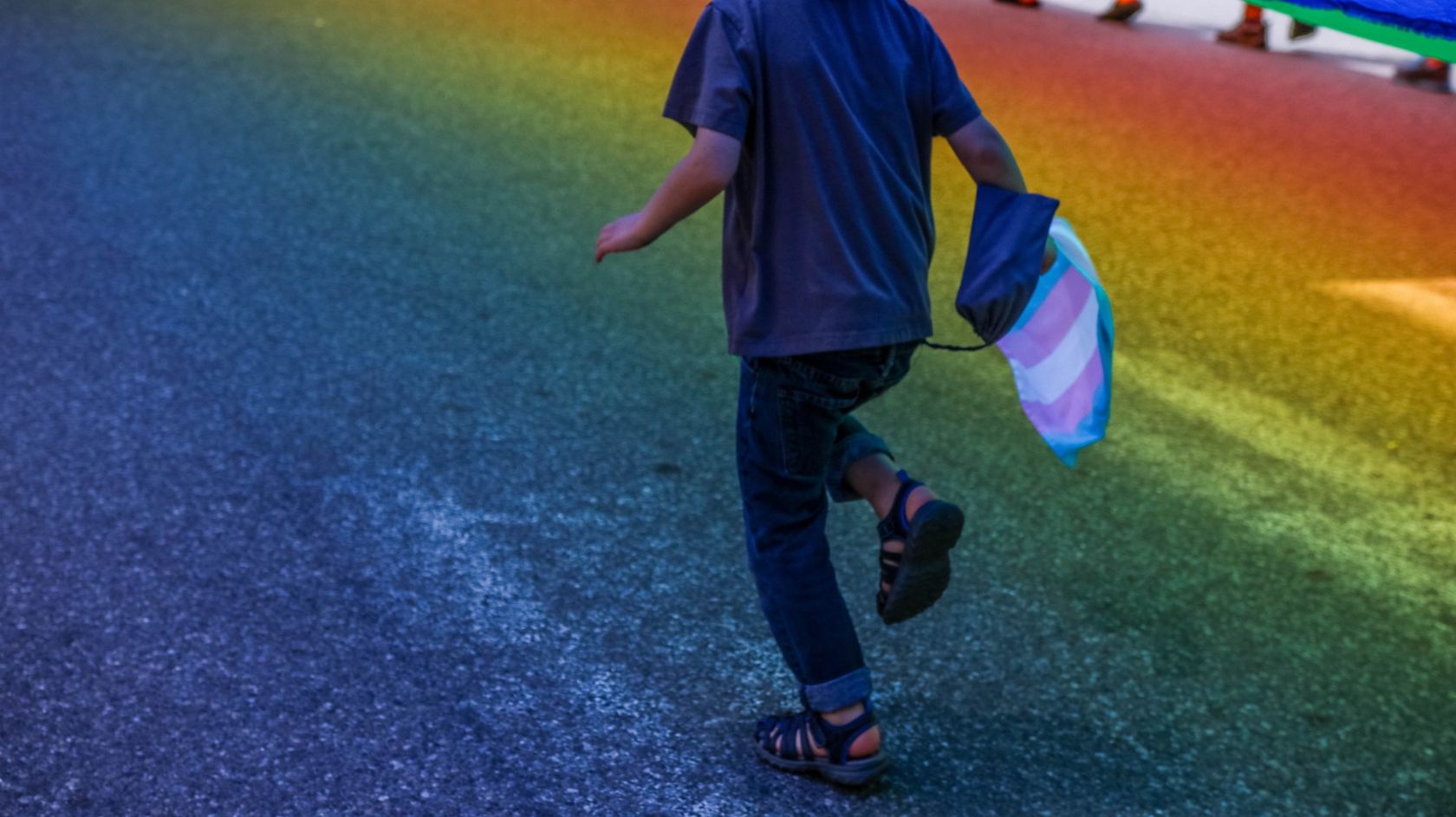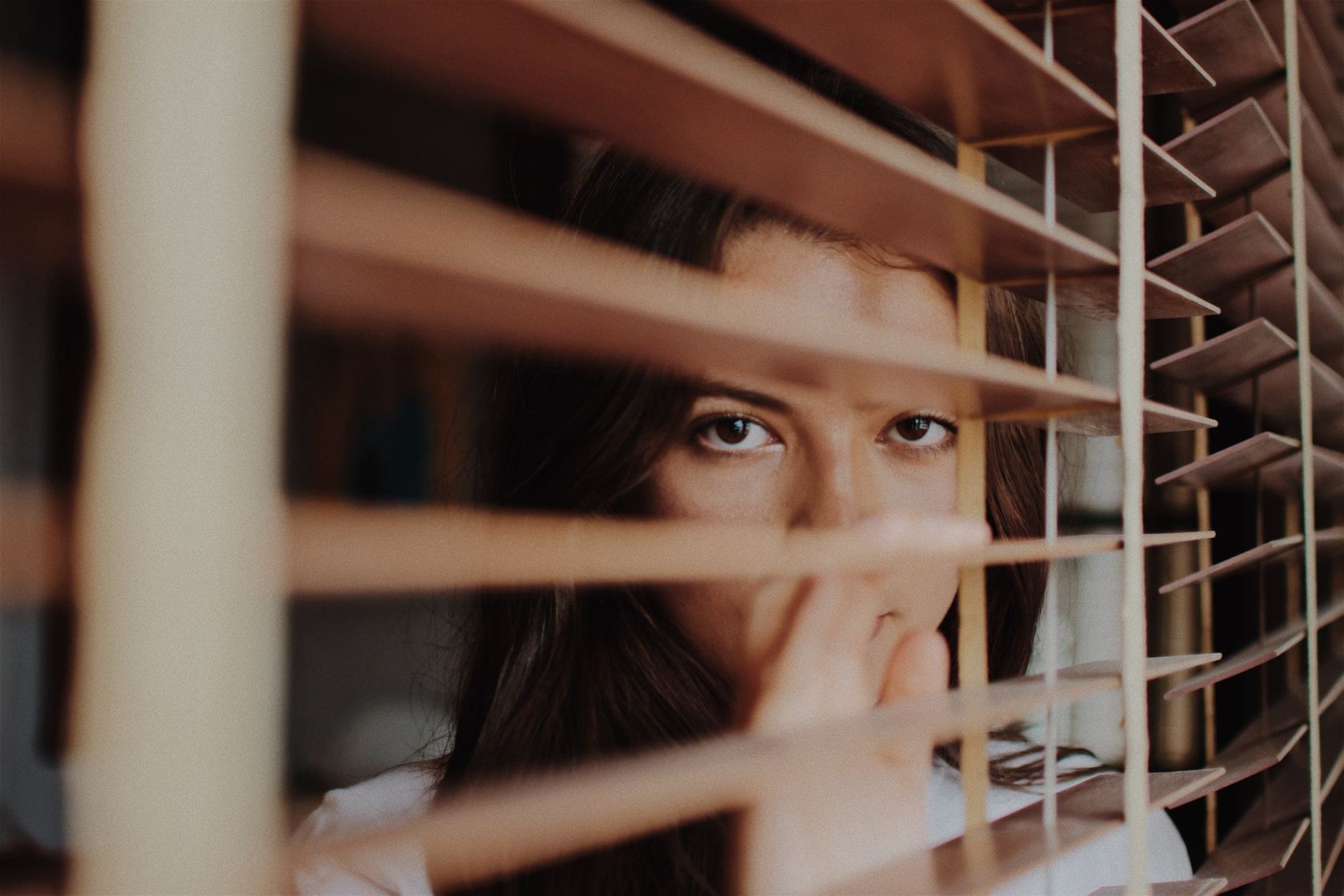Adolescence is a critical time of growth, self-discovery, and, unfortunately, significant challenges. Some teens struggle with behavioral issues, emotional regulation, mental health disorders, and unhealthy coping mechanisms that interfere with their daily lives. When...
Recent Posts
After Residential Treatment: Helping Teens Transition Back Home
Residential treatment can be life-changing for a teen struggling with mental health, trauma, or behavioral challenges. But what happens after your child returns home? The transition back to daily life is a critical period — one that requires patience, structure, and...
How Residential Treatment Supports Teens with Co-Occurring Disorders
Navigating adolescence is challenging enough, but for teens grappling with co-occurring disorders, the journey can feel insurmountable. Co-occurring disorders, also known as dual diagnoses, refer to the presence of two health disorders occurring at the same time....
A Parent’s Guide To Navigating Grief In Teenagers
Grief is a complex emotion that can be challenging for teens to navigate. According to the Childhood Bereavement Estimation Model (CBEM), 1 in 12 children and teens in the U.S. will experience the death of a parent or sibling by age 18. While grief is usually...
How Long Is Residential Treatment for Teens?
If your child is about to begin a stay at a residential treatment center, you’re bound to have a lot of questions. What types of therapy will be involved? Will our family be allowed to visit? And, of course, how long is a teen residential treatment program? In this...
Is Residential Treatment Considered Inpatient or Outpatient?
If you’ve never engaged with residential treatment centers before, it’s common to ask: is residential treatment considered inpatient or outpatient? Well, the answer is simple: our residential teen treatment centers are considered inpatient because teens stay at our...
Benefits of Residential Treatment for Teens: When to Choose It Over Other Treatment Programs
When seeking help for your teen, it’s important to know the benefits of residential treatment teens can take advantage of. For teens suffering from mental health disorders, behavioral disorders, psychological disorders, or addiction issues, there are a variety of...
Does Insurance Cover Teen Residential Treatment?
How Much Does Residential Treatment Cost? Cost of Residential Treatment The cost of residential treatment varies between each Residential Treatment Center (RTC). It may range from free (which is very uncommon) to tens of thousands of dollars per month. And if you are...
3% of Teens Identify as Transgender or Gender Nonconforming in America
How Many Transgender Teens Are There? Approximately 150,000 American teens (ages 13 to 17) identify as transgender in the United States today. Of course, there is no general age in which people typically “discover” or “come out” as transgender. Nonetheless, more and...
Recognizing Signs of Teen Depression: A Guide for Parents
It is very common for children and adolescents to experience occasional moodiness or periods of sadness. The causes of teen depression are multifaceted, involving biological, environmental, and social factors such as bullying, mental health conditions, stressful life...
Distinguishing Between Signs of Depression or “Moodiness” in Teens
Parents often wonder how to distinguish normal teenage mood swings and rebellions from actual symptoms of depression. Fortunately, there are several ways to tell. As many as 1 in 5 teenagers will experience depression at some point during adolescence. Unfortunately,...
Teen Depression Prevention: Parent, Friend, and Support Tips
At any given time, one out of every five teenagers is experiencing major depression. If you are a parent to an adolescent or teenager, you are likely familiar with the moodiness inherent to this age group. Mood swings are common, as teens are experiencing a vast...
How to Talk to Your Teen About Depression
Teen depression is more common — and more serious — than many parents realize. While emotional ups and downs are a normal part of adolescence, persistent sadness, irritability, or withdrawal may point to something deeper. Knowing how to talk to your teenager about...
Managing Expectations With Teens
As a parent of an adolescent, teen, or young adult, your attitudes, actions, and beliefs can have a tremendous impact on your child’s well-being. Your teen is experiencing the challenging process of transitioning from childhood to adulthood. As someone who has gone...
How to Know If Your Child Is Transgender
There is no simple test to tell if a child is transgender. Experts often refer to the idea of insistence, consistency, and persistence in terms of gauging whether a child is just going through a phase or not. This means the more insistent a child is and the longer...
Social Anxiety Disorder in Teens: Signs, Symptoms, and How to Help
What is Social Anxiety Disorder?
Social anxiety disorder (SAD) affects 1 out of 3 adolescents between 13 and 18 years old. Over 19 million people across America suffer from social anxiety disorder (SAD) today, including a significant number of young adults. It is the most common anxiety disorder and the third most common mental health disorder in the country. Social Anxiety Disorder, also known as Social Phobia, is marked by an ongoing and pervasive fear of social interaction and/or situations where embarrassment might occur.
While it is common to experience some anxiety in new social situations, individuals with social anxiety disorder feel overwhelming self-consciousness, distress, and fear of judgment in day-to-day social interactions. SAD prevents individuals from having normal relationships and interactions. It can also negatively affect normal daily activities. Additionally, those who suffer from SAD often experience intense worry about upcoming social situations (causing distress days or even weeks in advance).
People with social anxiety disorder frequently avoid social interactions altogether. This leads to diminished relationships, withdrawal, and overall isolation. Like many other anxiety disorders, those with SAD may realize and acknowledge that their anxiety is often unreasonable or unwarranted but still find themselves trapped in the cycle of anxiety and fear of social humiliation or embarrassment. Strong physical symptoms, such as nausea, trembling, sweating, or blushing, may occur in sufferers even in “normal” everyday social situations.
How Do I Know If My Teen Has Social Anxiety?
If you are a parent, then you likely hope your child will grow up feeling self-assured and comfortable in their own skin. These characteristics are some of the most vital when it comes to thriving socially and thus achieving an overall sense of well-being. Unfortunately, many children mature into socially anxious teenagers. This can happen for a variety of reasons, and there may be multiple factors that contribute to a teen’s social anxiety.
Risk Factors
As with most mental health disorders, social anxiety disorder is not attributed to one single cause. Nonetheless, certain factors can increase a person’s likelihood of developing SAD, including genetics, brain chemistry, and/or trauma. This means those who have a first-degree family history, chemical imbalances in the brain, or have experienced long-term stress or trauma may have an increased risk of being diagnosed with social anxiety disorder.
Social anxiety disorder tends to emerge in adolescence, and because of this trend, mental health professionals have explored additional risk factors for this younger population.
- Demeanor – a child who is inherently shy, withdrawn, and/or apprehensive to try new things may be at an increased risk for the development of social anxiety disorder as they enter into the adolescent and teenage years.
- Health or Physical Issues – if a teen has any sort of health or physical problem that is noticeable to others (like a physical deformity, large scar, birthmark, etc.), they may be more prone to suffering from social anxiety.
- Speech Problems – having a speech impediment can be challenging for many reasons, and can negatively affect a person’s confidence and self-esteem. This is especially true with teenagers. Low self-esteem often impacts a teen’s willingness to put themselves “out there” in social situations. Unfortunately, the more time a teen (or anyone) spends alone and isolated, the harder it becomes to re-engage with others.
- Being Bullied – bullying is, unfortunately, a very prevalent occurrence in schools and on the Internet. Being bullied can affect many areas of a person’s life, including social relationships.
- Parenting Style – some medical and mental health professionals attribute the development of SAD in teenagers to parenting styles. Much research indicates a strong correlation between overprotective parenting styles and social anxiety disorder in the child. This could be because overprotective parenting styles may keep children from experiencing a healthy level of social interaction and, thus, lacking the opportunity to learn the necessary social skills.
Symptoms of Social Anxiety in Teens
If you notice your teenager is struggling socially, there is a chance they may be suffering from social anxiety disorder. Knowing the signs and symptoms of this mental health disorder is the first step in helping your teen get the necessary help. Here are some potential signs of social anxiety in teens:
- Anxiety about being with other people (especially people they do not know)
- Difficulty talking to and/or having “normal” conversations with others
- Feeling uncomfortable or self-conscious around other people
- Experiencing embarrassment while interacting with others
- Fear of being embarrassed
- Self-judgment and criticism after social interactions
- Fear of being judged by others
- Worry for days or weeks before a public event
- Avoidance of public places and/or social situations
- Difficulty making friends and maintaining relationships
- Blushing, sweating, shaking, or rapid heartbeat when in social situations
- Stomach aches and nausea as a result of being around other people (other physical symptoms may include – confusion, diarrhea, muscle tension)
Every teen with a social anxiety disorder will not experience the same symptoms (or the same severity). While the symptoms can be quite significant and impair functioning in a variety of ways, social anxiety treatment for teens is possible.
Social Anxiety Disorder Treatment for Teens
Treatment for a social anxiety disorder in teens often involves psychotherapy, medication, or a combination of both. A treatment plan for SAD is typically based on the severity and frequency of symptoms.
Psychotherapy
Cognitive behavioral therapy (CBT) is the most commonly used approach to treating social anxiety disorder (and anxiety disorders overall). Cognitive behavioral therapy is typically short-term and goal-oriented. For teens with social anxiety disorder, this method of psychotherapy targets the unhealthy thinking patterns and behaviors that drive social anxiety and provides the tools and skills to manage the thoughts and choose healthier behaviors. Cognitive behavioral therapy also helps teens with SAD understand the connection between their thoughts, feelings, and behaviors.
Exposure Therapy
While not as common as CBT, exposure therapy can be an effective psychotherapeutic approach for teens with social anxiety. Exposure therapy gradually exposes the teen to their fears (and keeps them safe) while teaching helpful strategies for managing the fear. Exposure therapy is based on the belief that the more a person encounters their fears, the less and less scary they become. Exposure therapy also helps teenagers learn they can feel fear and “do it” (whatever it is they are afraid of – in this case, social situations) anyway.
Medications
Medication is often prescribed for teen social anxiety help, especially if SAD is significantly impacting their functioning. Overall, anxiety medication targets the brain’s emotional control center and aids in the circuits functioning more efficiently. A variety of medications, combined with therapy, may be prescribed to teenagers with social anxiety disorder, including:
- Selective Serotonin Reuptake Inhibitors (SSRIs): Typically prescribed for individuals with depression, SSRIs such as sertraline (Zoloft, citalopram (Celexa), escitalopram (Lexapro), and fluoxetine (Prozac), help the brain to slow the re-absorption of serotonin (a neurotransmitter that regulates anxiety and overall mood).
- Benzodiazepines: Benzodiazepines fall under the class of medications called sedatives, and while they are not typically the first course of treatment for teens with SAD (due to the addictive nature of the drugs and the risk of developing a tolerance), they are sometimes prescribed. Benzodiazepines such as diazepam (Valium), lorazepam (Ativan), clonazepam (Klonopin), and alprazolam (Xanax) work by affecting the activity of the brain’s neurotransmitter GABA, and as a result, tend to have a calming effect on the parts of the brain that become “excitable” (which translates to anxiety for many).
Treatment Options for Social Anxiety in Teens
Social anxiety disorder is a common mental health condition that can significantly impact daily life. While it can be challenging to manage, there are many effective treatments and strategies available. By understanding the causes and risk factors of social anxiety, distinguishing it from shyness, and building resilience and coping skills, individuals can learn to manage their symptoms and improve their overall mental health.
It’s essential to remember that social anxiety is not a sign of weakness, and seeking help is a sign of strength. By promoting mental health awareness and education, reducing stigma, and providing access to mental health resources, we at Polaris support teens with social anxiety and help them thrive. Contact us today to see how.
Polaris Teen Center is a residential treatment facility for teens and adolescents suffering from severe mental health disorders. Our highly accredited facility is fully licensed and certified in Trauma Informed Care and is a part of the Behavioral Health Association of Providers (formerly AATA).
Previous Post
Next Post
Related Posts
After Residential Treatment: Helping Teens Transition Back Home
Residential treatment can be life-changing for a teen struggling with mental health, trauma, or behavioral challenges. But what happens after your child returns home? The transition back to daily life is a critical period — one that requires patience, structure, and...
A Parent’s Guide To Navigating Grief In Teenagers
Grief is a complex emotion that can be challenging for teens to navigate. According to the Childhood Bereavement Estimation Model (CBEM), 1 in 12 children and teens in the U.S. will experience the death of a parent or sibling by age 18. While grief is usually...
How Long Is Residential Treatment for Teens?
If your child is about to begin a stay at a residential treatment center, you’re bound to have a lot of questions. What types of therapy will be involved? Will our family be allowed to visit? And, of course, how long is a teen residential treatment program? In this...
Benefits of Residential Treatment for Teens: When to Choose It Over Other Treatment Programs
When seeking help for your teen, it’s important to know the benefits of residential treatment teens can take advantage of. For teens suffering from mental health disorders, behavioral disorders, psychological disorders, or addiction issues, there are a variety of...
Does Insurance Cover Teen Residential Treatment?
How Much Does Residential Treatment Cost? Cost of Residential Treatment The cost of residential treatment varies between each Residential Treatment Center (RTC). It may range from free (which is very uncommon) to tens of thousands of dollars per month. And if you are...
3% of Teens Identify as Transgender or Gender Nonconforming in America
How Many Transgender Teens Are There? Approximately 150,000 American teens (ages 13 to 17) identify as transgender in the United States today. Of course, there is no general age in which people typically “discover” or “come out” as transgender. Nonetheless, more and...
Recognizing Signs of Teen Depression: A Guide for Parents
It is very common for children and adolescents to experience occasional moodiness or periods of sadness. The causes of teen depression are multifaceted, involving biological, environmental, and social factors such as bullying, mental health conditions, stressful life...
Distinguishing Between Signs of Depression or “Moodiness” in Teens
Parents often wonder how to distinguish normal teenage mood swings and rebellions from actual symptoms of depression. Fortunately, there are several ways to tell. As many as 1 in 5 teenagers will experience depression at some point during adolescence. Unfortunately,...
Teen Depression Prevention: Parent, Friend, and Support Tips
At any given time, one out of every five teenagers is experiencing major depression. If you are a parent to an adolescent or teenager, you are likely familiar with the moodiness inherent to this age group. Mood swings are common, as teens are experiencing a vast...









